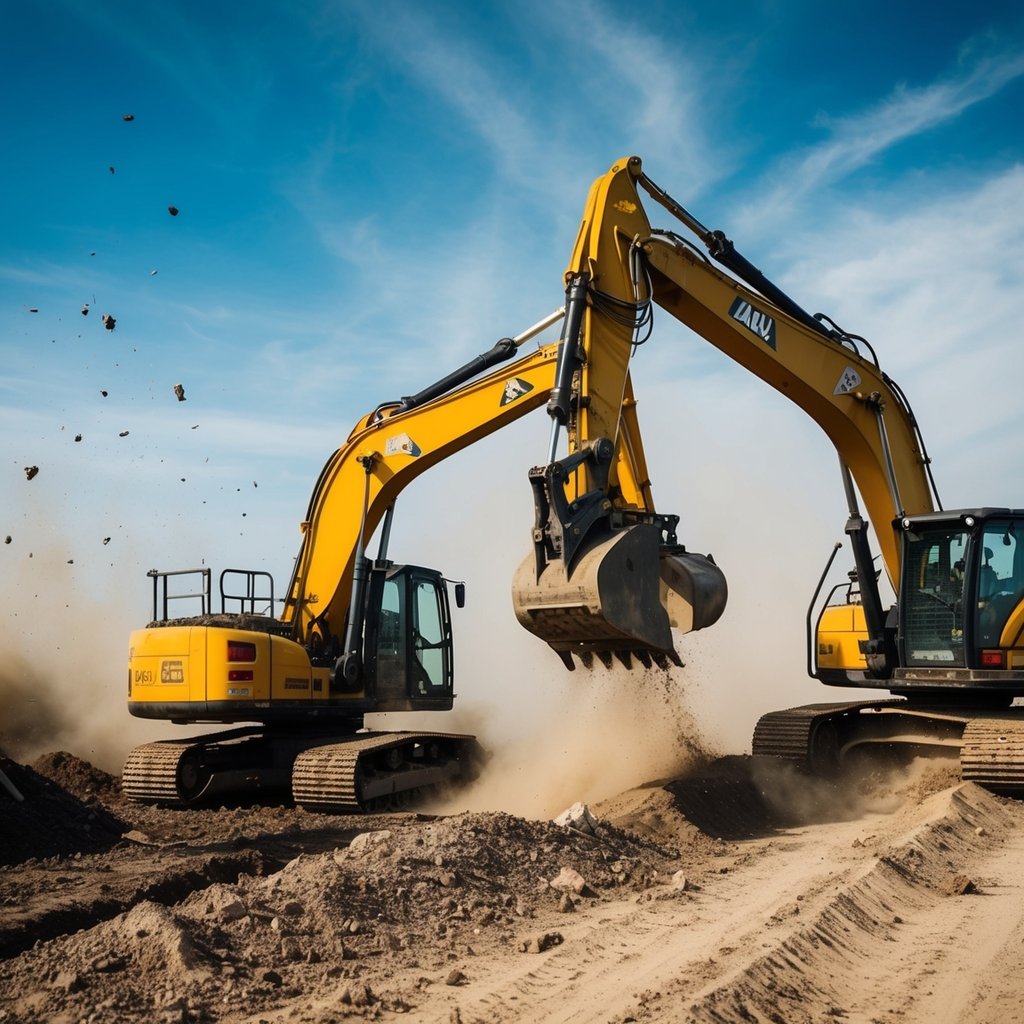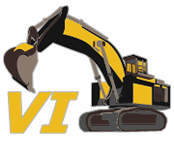Excavator Size Classifications: Mini To Large
Excavator Size Classifications: Mini to Large
Excavators come in various sizes to suit different construction needs. From compact mini excavators perfect for tight spaces to large excavators for heavy-duty jobs, there’s a size for every project. Choosing the right excavator size depends on factors like digging depth, lifting capacity, and worksite conditions.

Mini excavators weigh between 1 to 10 tons and excel in small-scale projects. Standard excavators range from 10 to 45 tons, offering a balance of power and versatility. Large excavators, weighing over 45 tons, tackle the biggest jobs in construction and mining.
Each size class has its strengths. Mini excavators shine in landscaping and utility work. Standard excavators handle residential and commercial construction with ease. Large excavators are the workhorses of major infrastructure projects and quarries.
Key Takeaways
- Excavators come in mini, standard, and large sizes to match project needs
- Factors like digging depth and site conditions guide excavator size selection
- Each excavator size class excels in specific construction applications
Understanding Excavator Sizes and Classifications
Excavators come in various sizes to suit different jobs. From petite models perfect for backyard projects to massive machines for heavy construction, there’s an excavator for every need.
Mini and Compact Excavators
Mini excavators are darling little workhorses. They weigh under 6 tons and fit snugly in tight spaces. These nimble machines excel at landscaping and residential work.
Their compact size makes them a breeze to transport. They’re fuel-efficient too, which is lovely for the environment and your wallet.
Mini excavators can dig trenches up to 10 feet deep. They have a modest bucket capacity, usually around 0.5 cubic yards. Despite their small stature, they pack a punch with impressive hydraulic systems.
Midi and Standard Excavators
Midi excavators are the Goldilocks of the bunch – not too big, not too small. They typically weigh between 6 and 10 tons. Standard excavators are a step up, ranging from 10 to 25 tons.
These mid-sized machines are versatile stars on construction sites. They boast greater digging capacity and reach than their mini cousins. Midi excavators can dig trenches up to 15 feet deep, while standard models can reach 20 feet or more.
Their lifting capacity is quite impressive. Some can hoist up to 20,000 pounds. With larger buckets and more power, they’re ideal for medium-scale projects.
Large and Heavy-Duty Excavators
Large excavators are the giants of the construction world. These mighty machines weigh over 25 tons and can handle the toughest jobs with ease.
They excel at heavy-duty tasks like digging foundations for skyscrapers or working in quarries. Their massive buckets can move mountains of earth in no time. Some models can dig over 40 feet deep!
These powerhouses have unmatched lifting capacity, often exceeding 50,000 pounds. Their long reach and robust hydraulic systems make them perfect for large-scale commercial projects. While they’re not as fuel-efficient as smaller models, their productivity is unmatched.
Operational Insights and Project Applications

Selecting the right excavator size is crucial for project success. It affects efficiency, cost, and overall results. Let’s explore some key factors to consider.
Attachments and Customization
Excavators can be customized with various attachments to tackle different tasks. Buckets come in different sizes and shapes for digging, grading, and cleaning. Hydraulic hammers break up concrete and rock. Grapples are perfect for demolition and material handling.
For landscaping projects, consider attachments like augers for planting trees or trenchers for irrigation systems. These versatile tools make your excavator a true workhorse.
Remember to match the attachment size to your excavator. A mini excavator can’t handle attachments meant for larger machines. Always check the compatibility and weight limits.
Site Conditions and Excavator Efficiency
The worksite greatly impacts excavator performance. Soft, muddy ground may require wider tracks for better flotation. Rocky terrain calls for robust undercarriages.
Space constraints are important too. In tight urban areas, a compact excavator with reduced tail swing might be best. For open construction sites, larger machines can move more material faster.
Consider the climate as well. Hot environments may need extra cooling systems. Cold weather operations require engine block heaters and special fluids.
Special Considerations in Excavator Selection
When choosing an excavator, think about the project’s specific needs. Demolition work often requires specialized attachments and extra reach. Meanwhile, trenching jobs benefit from machines with good depth capacity.
Fuel efficiency is becoming more important. Newer models often have eco-modes that save fuel without sacrificing power. This can really add up in long-term projects.
Don’t forget about transport. Can your truck handle the weight of the excavator you’re considering? Will it fit on local roads and under bridges?
Lastly, consider the operator’s comfort. Features like ergonomic controls and good visibility can boost productivity and reduce fatigue.






